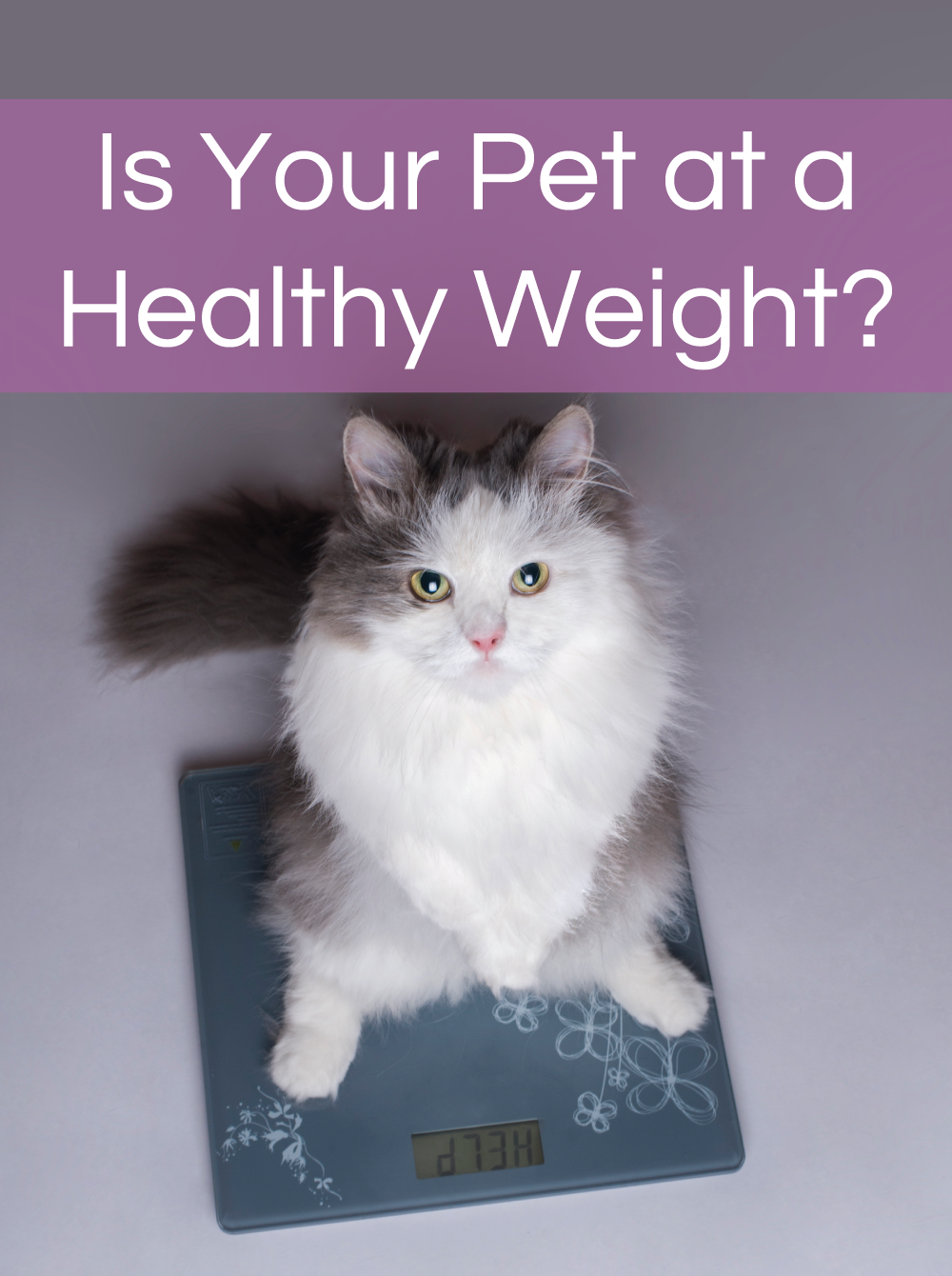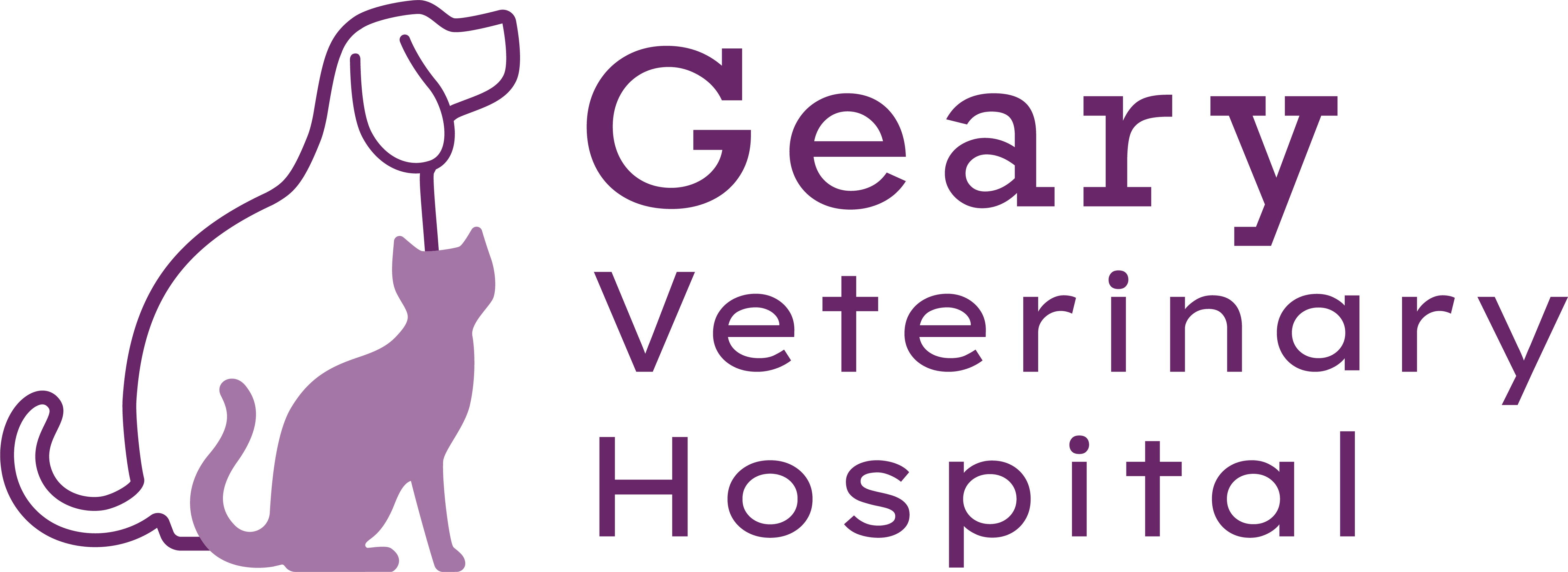
One of the first things we do after greeting your pet at Geary Veterinary Hospital is to get a weight. Weight tells our doctors so much about your pet’s health. Studies have shown that an estimated 50 percent of dogs and about 40 percent of cats in America are considered overweight or obese.
At your pet’s appointment, we check the number on the scale, as well as take a visual look at your pet from the side and from above. This is something you can occasionally do at home as well.
How to do a visual test:
very thin
Severely defined ribs and waist
thin
Easily visible ribs and waist
ideal weight
Ribs are easily felt, but not seen, and waist is visible
OVERWEIGHT
Ribs are not easily seen or felt
OBESE
Ribs are not easily seen or felt, with no waist visible
Body Condition System (Canine) Courtesy of Nestlé PURINA®
Body Condition System (Feline) Courtesy of Nestlé PURINA®
We’re most concerned about “Very thin” and “Obese.” If your pet falls into either category, please make an appointment with us so we can figure out what’s going on.
Every time you come in, we’ll take a careful look to see whether your pet’s weight level has changed, and we’ll examine the reasons why (growth, aging, diet, activity level). We want to be your partner in helping your pet live a long, healthy life. We can offer suggestions about weight management, diet, and exercise for your furry friend.
Why do we talk so much about weight management? Not to make you feel bad! We know that you love your pet and want what’s best for him or her. But as veterinarians, we see pets who develop chronic conditions such as diabetes, heart problems, or joint damage because of being overweight or obese. Let’s work together to prevent such outcomes. Routine vet appointments give us the opportunity to talk about your pet’s age, history, overall health, and weight so that we can offer ideas for proper nutrition and fitness.
Tips to Keep Pets Healthy and Fit
TAKE A CLOSER LOOK
America has so many obese and overweight pets that many people no longer know what a normal weight looks like in their dog or cat. Nearly 40 percent of clients mistakenly think their dog, who is overweight by the vet’s standards, is an acceptable weight. You may not realize how unhealthy your pet really is.
STICK TO A FEEDING SCHEDULE
Some pet owners feed their pets twice a day. Other pet owners break the meals into smaller bits to feed up to four times per day. If you set a feeding schedule and stick to it, your cat or dog comes to expect certain mealtimes and may be less likely to whine and beg for food at other times. Make sure each human family member knows the daily food amount and follows the schedule, so meals don’t get accidentally repeated. Avoid offering table scraps to your pet. Our best recommendation? Never use a continuous feeder that makes it possible for your pet to eat all day long. That’s a recipe for overeating and becoming overweight.
MEASURE CORRECTLY
Use a measuring cup and follow the feeding directions on the bag of food, accounting for your pet’s weight and age. Not all pet foods are created equally for calories. Level off the measuring cup. A heaping scoop means extra calories!
LET YOUR VET SET UP A WEIGHT-LOSS PLAN
If your pet needs to lose weight, we can help you develop an effective program that allows for a consistent, healthy rate of weight loss. We want to be sure that your pet doesn’t lose too much weight too quickly. We’ll take into consideration your pet’s age, species/breed, feeding schedule, exercise level, and environment to create a weight-management plan.
LIMIT TREATS
This is a challenge for most of us! Those puppy dog eyes or demanding meows can lead us to reach for treats, just like our pets want us to. For optimum health, we recommend that treats make up no more than 10 percent of your pet’s daily calories. Remember, our pets learn to beg because it works for them. If you follow a good nutrition program for your pet, don’t feel guilty that your furry friend might be hungry.
Are You Overfeeding Your Dog? Courtesy of Royal Canin®
Are You Overfeeding Your Cat? Courtesy of Royal Canin®
REWARD WITH PLAY AND PRAISE
It’s true that treats help us get our pets to behave or perform, but did you know that praise can be very effective, too? Dogs and cats respond to play and attention as a reward system. Watch how they love interactions! Cats enjoy the opportunity to stalk or hunt a favorite toy. Dogs respond well to play, affection, and verbal praise. All of this can lead to a stronger bond.
TRUST YOUR VETERINARIANS
We can do more than point out if your pet is overweight. We’re here to help evaluate your dog’s or cat’s muscle condition and overall health so you have access to the facts you need to make decisions about feeding and exercise.
KNOW THAT WEIGHT CONTROL IS A LIFELONG NEED
Your cat or dog will be healthier if you start with a nutrition plan and keep at it every day. Make sure exercise is a priority, too. Daily activity keeps your pet healthy and fit—and strengthens the bond you share. All these efforts will be worth it!




